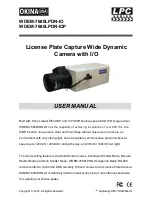
V1.02
Thom Hogan’s Complete Guide to the Nikon D300
Page 126
Solution
:
You probably turned the camera off and pulled the
card out before the buffer flushed all the images. Remember,
the camera is buffering images to memory before writing them
to the card. If you have a full buffer of 40 images it can take a
few seconds to clear that buffer to CompactFlash. Fortunately,
the D300 doesn’t have the design problem of previous Nikon
DSLRs, which you could turn off before flushing the buffer
completely (the D1 series only flushed one image before
letting the camera turn off). But you can still get too hasty and
pull the CompactFlash card out of the camera before all of the
images have been written to the card. Pay attention to the
green CompactFlash Access lamp—if it’s on, the camera is
still writing images to the card and you shouldn’t remove the
card.
Problem:
A 4GB or larger capacity card only shows 2GB of
storage space available.
Solution
:
To fully address the 4GB of space on the card it
must be formatted using FAT32 formatting. If the card was
formatted using FAT (or FAT16 as it is sometimes called), the
maximum capacity is limited to 2GB. Note that some recent
cards with large capacities also have a switch that must be
flipped to enable them to be used above 2GB.
Image Formats
The D300 saves images to the CompactFlash card in three
image formats: JPEG, TIFF, and NEF.
• Saving an image in JPEG format performs the necessary
steps to convert the 12-bit
47
sensor data into 16-bit image
data using the camera settings that are in effect, reduces
the image data that was used by the imaging ASIC during
this process to 8 bits, copies the camera settings into the
EXIF fields, and applies data compression that loses image
information.
47
14-bit data can only be created via NEF images, and only by setting the 14-bit NEF
capability directly. Doing so slows the camera down in continuous shooting.















































